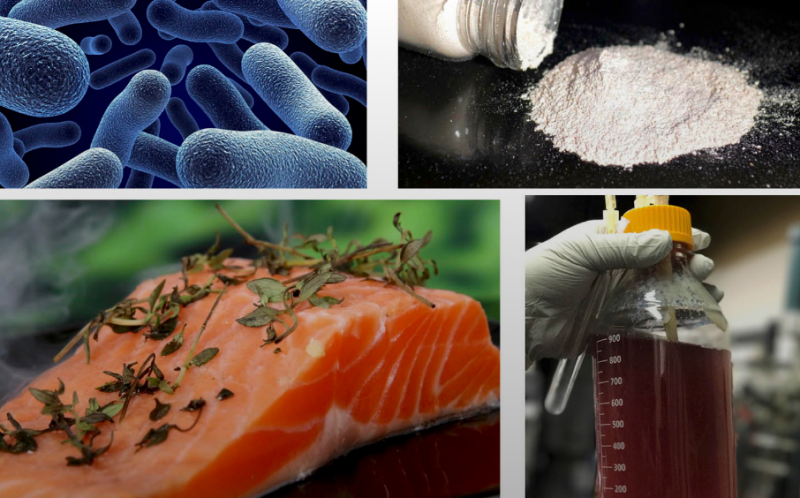NovoNutrients Startup Turns Climate Pollution Into Fish Feed
Published on by Water Network Research, Official research team of The Water Network in Business
NovoNutrients has developed a proprietary process which uses microbes to convert CO2 from industrial emissions into food for fish and other animals.

Source: NovoNutrients homepage print screen
NovoNutrients employs a natural fermentation process to capture and convert CO2 and other forms of waste carbon into animal feed. The process is similar to those used in producing other fermented food products like tofu, beer, wine, cheese, yogurt, and yeast.
During fermentation, a consortium of naturally occurring, non-GMO, single-cell microorganisms works symbiotically to fix (capture) carbon dioxide, converting it into organic building blocks for growth and reproduction. The microorganisms are chemoautotrophs, meaning that they can produce complex organic compounds like proteins, fats, and carbohydrates from simple, inorganic ingredients like CO2 and hydrogen.
After fermentation, the microbes are harvested, dried, pelletized and packaged into a high protein, fish-free feed (F3) ingredient suitable for aquaculture and other forms of animal feed.
The microbes in the consortia are carefully selected to produce a high protein, nutritionally balanced feed rich in omega-3s, probiotics, vitamins, minerals, and antioxidants. All microbes have a GRAS (Generally Recognized As Safe) designation from the FDA. Because the fermentation is done in a closed, sterile bioreactor, the feed product is free of harmful toxins like pseudomonas, mycotoxins and cyanotoxins that can contaminate feed made by other methods.
NovoNutrients’ microbes can grow off of a variety of carbon sources, including bioethanol refinery emissions, cement flue gas, and oil & gas refinery waste gases. Because CO2 released into the atmosphere is the primary cause of anthropogenic climate change, capturing CO2before it’s emitted has tremendous global environmental benefits.
NovoNutrients’ can process these streams of gaseous CO2 directly, turning large volumes of a harmful GHG gas into a valuable feed product. By using waste carbon as a feedstock, the environmental benefits of creating an F3 feed are greatly magnified.
Source: NovoNutrients
Media
Taxonomy
- Fisheries
- Integrated Water Management
- Ecosystem Management
- Pollution
- Marine
- Water Pollution Control
- Oceanographic Survey
- Animal Feed
- Fish Food
- Pollution
- Marine Technologies
- Animal Health